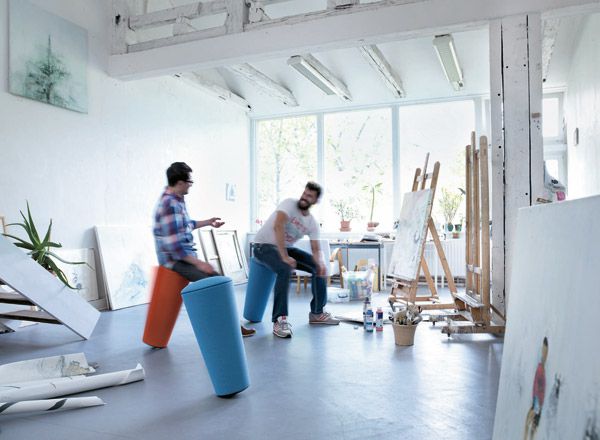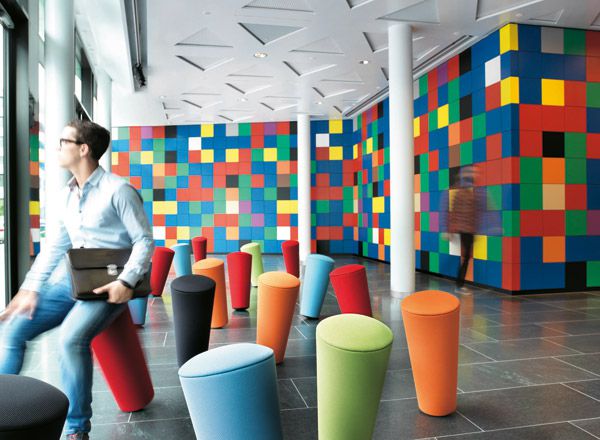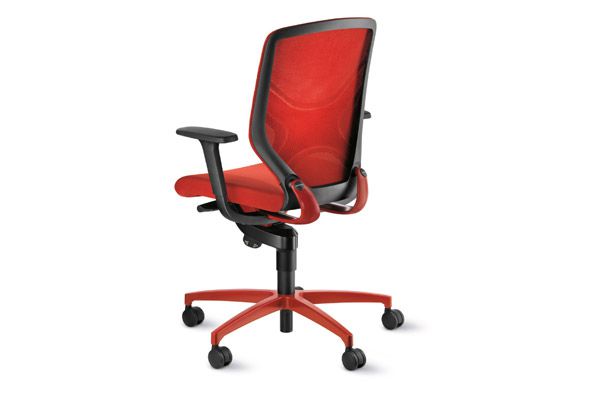Is the mindset of designing for convenience destroying the human body? Commercial furniture makers, Wilkhahn dissect the problems of modern office culture, and propose how design can take a commanding role in causing a much-needed seismic shift.

August 11th, 2015
From a biological perspective, we humans are still hunters and gatherers, driven by our instincts and our “natural blueprint”. Our bodies are designed to move, especially to walk; and here, the culture of modern offices and its underlying emphasis on “convenience” is killing us.
Burkhard Remmers, international communication director from commercial furniture studio, Wilkhahn, explains that current commercial culture – and the way designers think about the functionality of space – is ultimately “reducing strain on our bodies, where office work has become a kind of a comatose inactivity.”

Here Remmers notes that: “Unfortunately, most organisational concepts are still focused on reducing movement and keeping routes we take to get from A to B short. We should ask if these ideas of organisation in general really still fit the skills needed in a knowledge-based economy, especially in office environments.”
Generally speaking, you would think that designing for convenience would cut the proverbial fat of say, walking unnecessary lengths to the printer, getting to the elevator quickly from any vantage point or not having to walk to the other end of the office to follow up with a colleague; all of which should reduce time-wasting and presumably increase productivity, right?. And to some extent, it works. But designing for convenience has created some dangerous side effects including: metabolic disorders, cardiac and circulatory problems, headaches, muscular and skeletal complications, issues with digestion, diabetes, obesity and even cancer and depression related mental illness.

A number of design houses are already jumping on this call to action; no doubt you’ve heard the recent adage that ‘sitting is the new smoking’ – to which Remmers responds that: “It is a remarkable statement, but also much too simplistic. This is a challenge for our understanding of ergonomics, of organisational and architectural concepts and of our culture.”
While some are only beginning to cotton on to the role design can play in improving the human condition within commercial settings, Wilkhahn has devoted decades to making people less desk-bound and invested a great amount of time and research into this area as early as the 1970s.

“Back in the seventies, designer Nick Roericht – who was a student and later a teacher at the legendary Ulm University of Design – carried out a major study for Wilkhahn entitled ‘From a posture-driven to a movement-driven seat’. His radical concept of a leaning aid instead of a chair later became part of the Wilkhahn range (Stitz 2). But the results also led to the groundbreaking FS-Line office chair and allowed the principle of dynamic sitting to gain widespread acceptance. In 2005, we gave a critical rethink to the development of chair ergonomics using original research from medical sports and science. The results confirmed that two-dimensional movements are not sufficient to stimulate the complex interrelations of our body. The challenge became ‘to teach sitting to walk’.”
In response to the problems created by the modern “convenient” office, and after five years’ in development, Wilkhahn officially launched the ON chair in 2009 (and officially at Orgatec in 2010). This was the first chair with patented Trimension, a new kinematical principle stimulating natural three-dimensional movements. It stimulates and activates the body without tiring or overtaxing it.

Six years later in a more recent move to contribute to getting people to move more, Wilkhahn debuted its latest innovation, the IN chair. Also developed off the back of some serious R+D, specifically the ‘From a posture-driven to a movement-driven seat’ study and the more modern research from the German Sport University in Cologne, the IN chair continues teaching sitting to walk.
“After years of exhaustive research and development,” says Remmers, “we came up with a patented world first called Trimension®. This is a new international standard that was used for the first time in our ON® office chair. Now our engineers have succeeded in adapting this pioneering kinematics for an office chair in the mid-range price segment. The launch of IN 3D chair heralds an office chair that ensures previously unparalleled sitting dynamics, follows the body in perfect synchronisation and keeps its centre of gravity whatever the posture. This doesn‘t just benefit our health, but also increases powers of concentration and our ability to relax.”

It should be achingly clear by now that design, as an industry, needs to start looking at how to positively impact on human behavior – and product alone isn’t enough. Companies such as Wilkhahn are trail-blazing this sector by focusing on solving problems ‘with’ product, investing in intensive, science-based R+D to inform their output, rather than product alone and the colours it comes in. And that is the critical difference.
Contact Wilkhahn here or call (61 2) 9310 3355
INDESIGN is on instagram
Follow @indesignlive
A searchable and comprehensive guide for specifying leading products and their suppliers
Keep up to date with the latest and greatest from our industry BFF's!

In design, the concept of absence is particularly powerful – it’s the abundant potential of deliberate non-presence that amplifies the impact of what is. And it is this realm of sophisticated subtraction that Gaggenau’s Dishwasher 400 Series so generously – and quietly – occupies.

In this candid interview, the culinary mastermind behind Singapore’s Nouri and Appetite talks about food as an act of human connection that transcends borders and accolades, the crucial role of technology in preserving its unifying power, and finding a kindred spirit in Gaggenau’s reverence for tradition and relentless pursuit of innovation.

It’s the million-dollar question: what does the future of work look like? Herman Miller has put it to Australia’s top design minds to conceptualise what that future might look like, in its inaugural ‘Work, Redefined’ design challenge.

The 2023 Nexus Designs Janne Faulkner Prize for Design Excellence at RMIT has been announced and it follows some exciting leadership changes at the practice.
The internet never sleeps! Here's the stuff you might have missed

Andrea Mulloni is the head of sustainability at furniture manufacturer, Arper. With a particular emphasis on the evolving Catifa Carta chair, we chatted to him at Arper’s stand during Milan Design Week.

This clever conversion of a commercial building to a university campus is setting a new benchmark in rethinking vacant city sites.